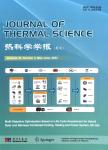Stearic Acid/Copper Foam as Composite Phase Change Materials for Thermal Energy Storage
Stearic Acid/Copper Foam as Composite Phase Change Materials for Thermal Energy Storage作者机构:School of Energy and Power EngineeringChangsha University of Science and TechnologyChangsha 410114China School of Chemical EngineeringNorth China University of Science and TechnologyTangshan 063009China
出 版 物:《Journal of Thermal Science》 (热科学学报(英文版))
年 卷 期:2020年第29卷第2期
页 面:492-502页
核心收录:
学科分类:08[工学] 080501[工学-材料物理与化学] 0805[工学-材料科学与工程(可授工学、理学学位)]
基 金:This work was supported by the National Natural Science Foundation of China(51874047,51504041) the Changsha City Fund for Distinguished and Innovative Young Scholars(kq1802007) the Fund for University Young Core Instructors of Hunan Province,China the Outstanding Youth Project of Hunan Provincial Department of Education,China(18B148) the Innovation Program for Postgraduate of Hunan Province,China(CX20190688)
主 题:stearic acid latent thermal energy storage copper foam
摘 要:The application of stearic acid in the latent thermal energy storage(LTES) systems is hindered due to its lower heat transfer rate. Stearic acid(SA) was blended with copper foam(CF) of pore numbers per inch(PPI) of 5, 20, and 40 to prepare composite phase change materials via a molten impregnation method. The thermal physical properties including latent heat, phase change temperature, and thermal energy storage density of composites were characterized. The thermogravimetric analysis indicated that the loadages of SA of SA/CF(5 PPI), SA/CF(20 PPI), and SA/CF(40 PPI) were 74.69%, 71.03%, and 63.54%, respectively;The latent heat of SA/CF(5 PPI), SA/CF(20 PPI), and SA/CF(40 PPI) were determined to 139.9 J·g^-1, 132.7 J·g^-1, and 117.8 J·g^-1, respectively. Meanwhile, the infrared thermal images of SA and SA/CF composites were provided to demonstrate the thermal energy storage and dissipation capability intuitively by the temperature response and surface temperature distribution. The infrared thermal images indicated the addition of CF also reduced the fluidity of liquid SA, and the SA/CF(40 PPI) had better internal heat transfer uniformity and thermal diffusion performance than SA/CF(5 PPI) and SA/CF(20 PPI). All these thermal properties suggested SA/CF(40 PPI) has the potential application in the latent thermal energy storage.



